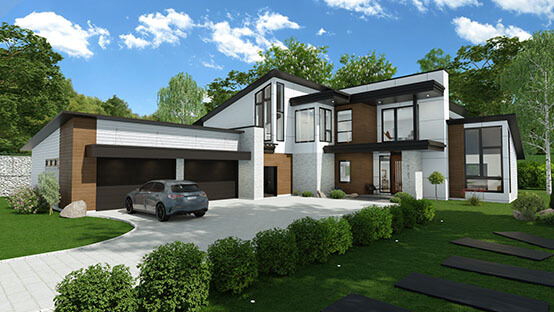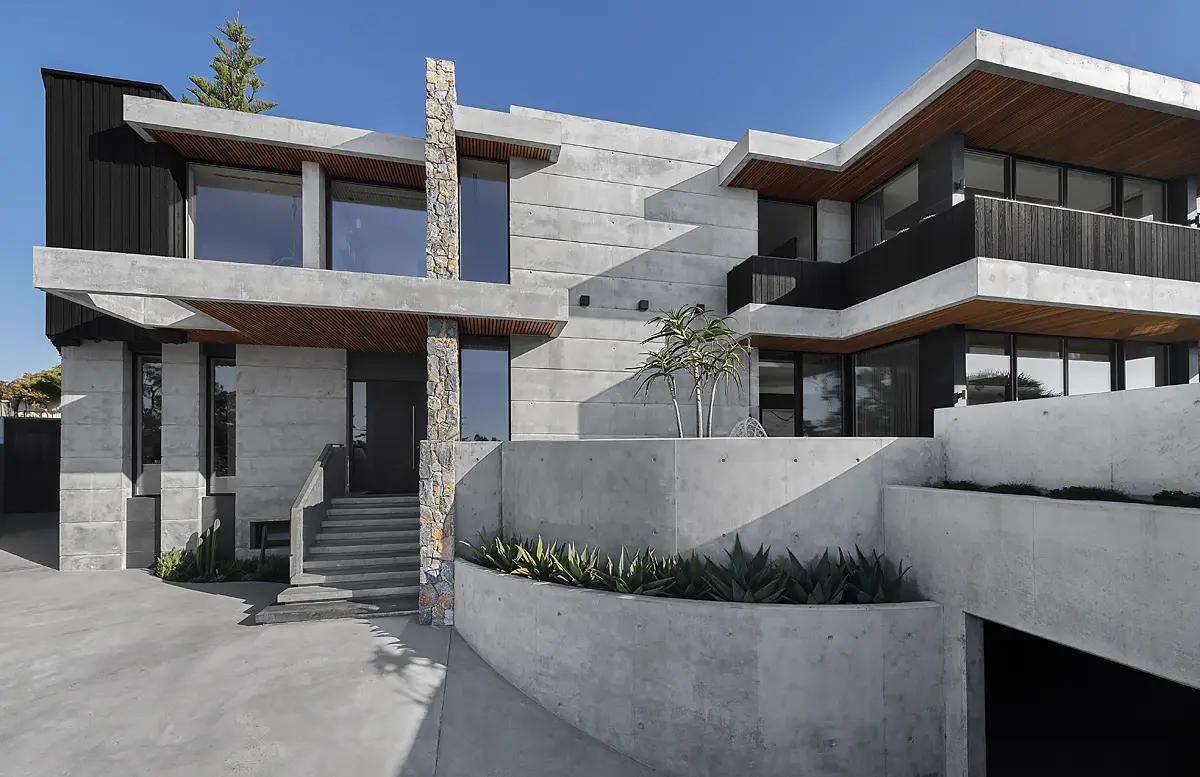Leading Patterns in Residential Design You Should Know About
As household architecture proceeds to evolve, numerous engaging patterns are shaping the way we develop and populate our living spaces. Secret growths such as lasting building methods, the assimilation of smart home technology, and the increase of modular homes emphasize a significant shift towards both capability and ecological responsibility.
Lasting Building Practices
An enhancing number of domestic jobs are embracing sustainable building methods, driven by a growing recognition of environmental influence and power efficiency. This shift is characterized by the integration of environment-friendly materials, energy-efficient designs, and innovative construction methods. Builders and home owners are increasingly focusing on the use of sustainable resources, such as bamboo and recycled steels, which not just reduce the carbon impact however likewise enhance the toughness and aesthetic appeal of buildings.
Incorporating energy-efficient systems is an additional essential element of lasting structure - residential house architect. Functions such as high-performance insulation, energy-efficient windows, and photovoltaic panels are becoming standard in brand-new domestic designs. These components not just add to lower power intake yet likewise provide substantial long-lasting financial savings for property owners
Moreover, the design of sustainable homes typically emphasizes natural light and air flow, minimizing the dependence on synthetic lights and climate control systems. Landscape design techniques, such as xeriscaping, more promote sustainability by decreasing water usage.
As the demand for sustainable living options proceeds to rise, the property design field is poised to adapt and innovate, making certain that future homes are not only ecologically accountable yet also comfortable and functional for their residents. - residential house architect
Smart Home Modern Technology
Smart home technology is changing the way property owners connect with their space, improving power, protection, and ease management. This innovative approach integrates various devices and systems, enabling customers to regulate their homes from another location or via automated procedures. Central to this trend is making use of clever tools such as thermostats, lights, safety and security electronic cameras, and devices, all attached through the Internet of Things (IoT)
Among the most enticing attributes of wise home modern technology is the capacity to tailor setups for ideal energy effectiveness. Homeowners can check power use and change cooling, illumination, and heating based on their routines, significantly lowering utility prices. Sophisticated security systems furnished with clever locks and surveillance video cameras offer peace of mind, making it possible for remote monitoring and alerts to possible safety and security breaches.
Assimilation with voice-activated assistants improves customer experience, permitting house owners to manage gadgets with basic voice commands. As modern technology remains to progress, the potential for smart home systems to improve top quality of life expands, making them an important factor to consider in modern-day household style. Eventually, smart home technology is not just a trend but an essential shift toward extra smart living settings.
Open Idea Living
Open concept living has arised as a defining function in contemporary property architecture, defined by the elimination of standard barriers in between spaces. This layout ideology advertises fluidness and connectivity within the home, permitting a seamless transition between locations such as the cooking area, dining, and living rooms. By getting rid of wall surfaces and dividers, open concept layouts create a feeling of space, cultivating an inviting environment that improves social interaction.

In addition, this strategy to residential style lines up with minimalism, concentrating on this contact form useful simpleness and aesthetic comprehensibility. Property owners appreciate the versatility of these layouts, which can be easily adapted to show individual design via furniture plan and style. As open idea living proceeds to get traction, it remains a testimony to progressing family members dynamics and the need for homes that boost connection and comfort.
Biophilic Style
Biophilic design has ended up being progressively substantial in domestic design, highlighting the innate connection in between humans and nature. This layout ideology looks for to integrate natural environments into living rooms, therefore fostering a sense of well-being and improving the top quality of life for occupants. By including attributes such as all-natural light, plant life, and natural materials, biophilic design promotes a harmonious connection in between indoor settings and the environment.
Trick components of biophilic style consist of huge home windows that give unobstructed views of outside landscapes, living wall surfaces that present greenery right into interiors, and open flooring strategies that motivate air flow and natural light penetration. Water features, both within and outside the home, offer to create calming atmospheres and improve sensory experiences.
Moreover, using lasting materials not only supports ecological stewardship yet also adds to much healthier interior air quality. As understanding of ecological issues increases, house owners are increasingly prioritizing layouts that mirror their link to nature. In significance, biophilic layout not only boosts visual appeal yet also try this site addresses emotional and emotional demands, making it a vital trend in contemporary household design.
Modular and Prefab Houses

In addition, prefab and modular homes are made with sustainability in mind. Several suppliers make use of green products and energy-efficient systems, such as photovoltaic panels and progressed insulation methods, adding to decreased energy intake and reduced utility expenses for home owners. The adaptability of style options enables personalization, dealing with varied visual choices and practical demands.
As the demand for cost effective real estate continues to climb, prefab and modular homes provide a feasible remedy, resolving both economic and ecological challenges. Areas are significantly recognizing the capacity of these frameworks, incorporating them into urban and rural settings. Generally, the trend toward modular and prefab homes signifies a change toward a lot more sustainable, efficient, and adaptable living environments, making them an essential facet of modern residential design.
Conclusion
In verdict, the evolving landscape of domestic architecture showcases considerable trends that prioritize innovation, sustainability, and well-being. Lasting structure methods and smart home innovations boost effectiveness and ease, while open concept living and biophilic layout foster social communication and a link to nature. Furthermore, the surge of modular and prefab homes offers personalized and budget friendly services, reflecting a broader news change in the direction of functional and liable living. These trends jointly underscore a commitment to creating unified and innovative property settings.
Key advancements such as lasting structure techniques, the combination of wise home technology, and the increase of modular homes highlight a considerable change in the direction of both functionality and environmental responsibility.The surge of prefab and modular homes has transformed the household style landscape, offering cutting-edge remedies for effective and lasting living.Moreover, prefab and modular homes are developed with sustainability in mind. Overall, the trend toward modular and prefab homes signifies a shift toward much more sustainable, efficient, and adaptable living settings, making them a pivotal facet of modern property style.
Sustainable building methods and wise home modern technologies improve efficiency and benefit, while open concept living and biophilic style foster social communication and a link to nature.